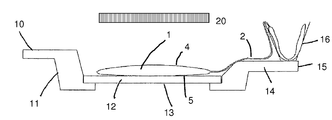Choices You Must Go for in Platelet Donation

When the disease (leukemias, lymphomas) or heavy treatments (chemotherapy, radiotherapy) prevent the production of blood cells by the bone marrow, the patient is said to be aplastic. The regular transfusion of platelets makes it possible to avoid the risk of haemorrhages involving the lives of patients. In the platelet donation process this is important now.
The gift of platelets
Blood donation is a source of platelets but to meet all needs, it is not enough. It is then necessary to collect platelets specifically.
Every day, 500 platelet donations are needed. The short lifespan (7 days) of platelets makes the regularity of donations essential.
How is a gift of platelets
The donation lasts 90 minutes. From the arrival to the departure, it is necessary to envisage approximately 2 hours.

The gift of platelets is done by appointment. Between 450 and 650 ml of platelet-rich plasma is taken from the donor by a technique known as “apheresis”. This donation makes it possible to obtain directly from the same donor 6 times more platelets than during a donation of blood.
- The shelf life of platelets is only 7 days.
- A period of 4 weeks must be respected between each donation of platelets.
- Its platelets can be given up to 12 times a year.
- Any donor aged 18 to 65 and with a high platelet count can make this type of donation.
All blood groups are searched. Nevertheless, platelet donation requires availability and reactivity due to the short shelf life of platelets (7 days). It is therefore proposed more particularly to regular donors.
A secure act
Every precaution is taken to ensure the safety of the donor. Precision maintenance ensures that sampling is safe. The donation is supervised by experienced medical personnel and the sample material used (needle, tubes, bags) is sterile and disposable.
The volume taken is adjusted according to the circulating blood volume and a healthy person recovers quickly after a donation of platelets.
- Some people may feel uncomfortable during or after the donation. It is most often a “vagal discomfort”, without gravity. It is important to drink before and after the donation to help the body recover quickly.
- Before any donation, an information document is given to the donor informing him of the risks, even the rarest, related to the levy.
- Being a plasma donor means that patients with hemophilia, coagulation disorders or severe immune deficiency can be treated. 90% of plasma samples are for the production of blood-derived drugs and the remaining 10% is used for transfusions.
Being a platelet donor is helping to treat patients with leukemias, lymphomas, or those treated with radiotherapy and chemotherapy. These patients are generally referred to as aphasia, that is, their bodies prevent the production of blood cells, including platelets. Regular transfusion of platelets avoids the risk of haemorrhage in these patients.
Conclusion
Platelets or thrombocytes are constituents of blood, just like red blood cells and white blood cells. They play an essential role in blood clotting in order to limit bleeding during a cut, and more particularly to avoid any bleeding inside the body. Platelets, like any other constituent of blood, are indispensable to life!
